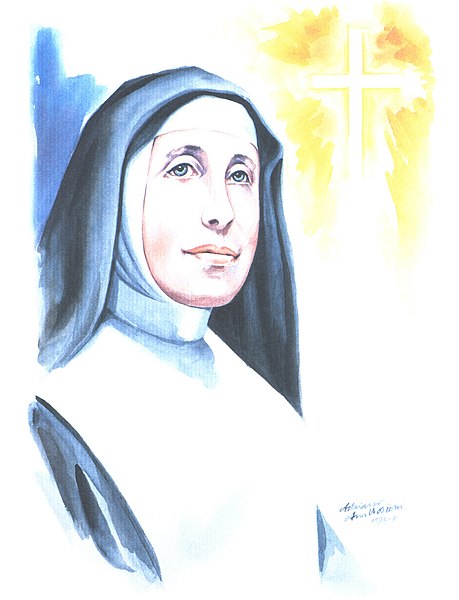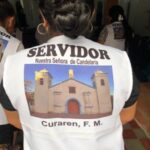Maria Therese von Wüllenweber was born on February 19, 1833, in Mönchengladbach, Rhineland, German Confederation, the eldest of five daughters. Her father was a baron, and her mother was a homemaker.
Maria Therese received her education from Benedictines in Liege, Belgium and from private tutors until she was fifteen.
When she was 24, Maria Therese decided to become a religious sister. Though her mother approved of her decision to enter a convent, her father was opposed. Nevertheless, Maria Therese entered a convent in Bloemendaal, Netherlands. After six years, she discerned that being a teacher was not a good fit for her, so she left in March of 1863.
For the next nineteen years, Maria Therese never lost her vision of serving God as a religious. The problem she had was finding the right “fit” to live out that vocation. Although she was in contact with various religious communities of sisters, none of them fit her vision. Her biography indicates that Maria Therese was not one to “settle” on a path that she deemed not right for her.
In 1868, while working with the poor in the Congregation of Perpetual Adoration in Brussels, she met Fr. John Baptist Jordan who, in religious life, called himself Francis Mary of the Cross Jordan. Fourteen years later, their two paths would come together to form a new congregation.
In 1875, Maria Therese made a private vow to devote her life to the missions. To put her resolve into action, she began caring for orphans and the elderly in a former convent in Neuwerk, Germany. In 1876, she rented and later bought part of a former Benedictine Abbey at Neuwerk to one day have a house of formation for future missionaries. She attracted a small group of women who cared for a few orphans and did charitable work in the town, and they lived according to a common rule.
The little group that Maria Therese started, however, never amounted to much, and their work had to be done clandestinely, for in those days, a movement called Kulturkampf (1871-1887) was in effect. This movement pitted the Catholic Church against the Protestant-led German government, and neither side trusted the other. Catholic religious communities were unable to function freely.
In 1882, Maria Therese learned of Fr. Jordan’s new religious order of men, initially called the Apostolic Teaching Society, later called the Society of the Divine Savior or Salvatorians. Maria Therese was captured by Fr. Jordan’s apostolic spirit and vision and became an enthusiastic follower.
On December 8, 1888, Fr. Jordan and Maria Therese founded the Salvatorian Sisters, and Maria Therese became the order’s first superior known as “Mother Mary of the Apostles.” In 1894, Fr. Jordan and Mother Mary of the Apostles realized their dream of locating the order’s central location in Rome.
Mother Mary of the Apostles died on Christmas Day, 1907 in Rome, and Pope Pius VI beatified her in October 1963. More than a half-century later, Pope Francis beatified Fr. Jordan.
Blessed Mary of the Apostles von Wüllenweber’s feast day is September 5.
Today, the Salvatorian Sisters serve in nations of Africa, Asia, Europe, North America, and South America.



